For the past week I’ve been downloading more of the books at the Internet Archive illustrated by Matthäus Merian. Among the hoard there’s a two-volume set of Robert Fludd’s Utriusque Cosmi, Maioris scilicet et Minoris, metaphysica, physica, atque technica Historia (1617–1626), a remarkable work which attempts to cover all the metaphysical, scientific and artistic knowledge of the time, opening modestly with a detailed description of the creation of the universe. The illustrations for these volumes by Merian and Johann de Bry are so good they’ve been plundered endlessly, not only in later books but in the general culture; I’ve swiped details myself on more than one occasion so—once again—it’s good to see an original printing with all the accompanying text, and also all the less familiar treatises and pictures.
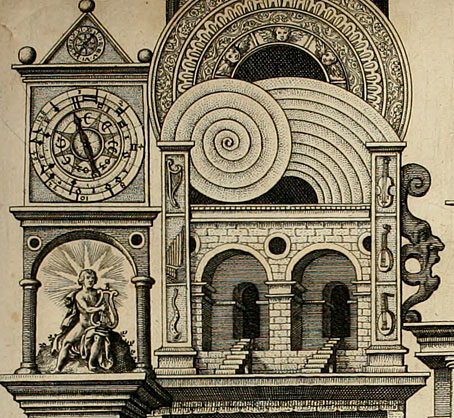
One area of Fludd’s study concerns music, a subject which Merian and De Bry illustrate using a variety of graphic devices, the most fanciful of which are the “Temples of Music” displaying the notes and divisions of the Pythagorean scale. The largest of the drawings was printed onto a fold-out sheet which explains the unfortunate tear in this copy. I love all the details on this one, some of which are rather unusual: who are the people underneath the temple in the room with the furnace? What are they doing, and why are they naked?
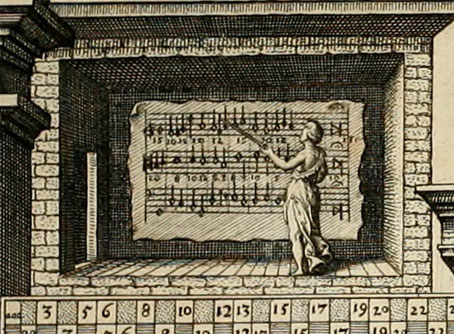
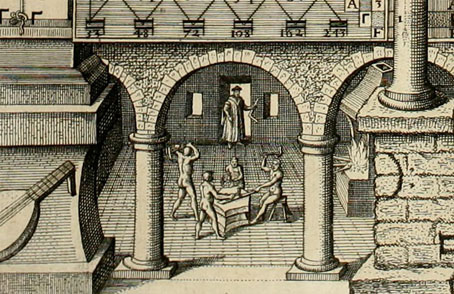
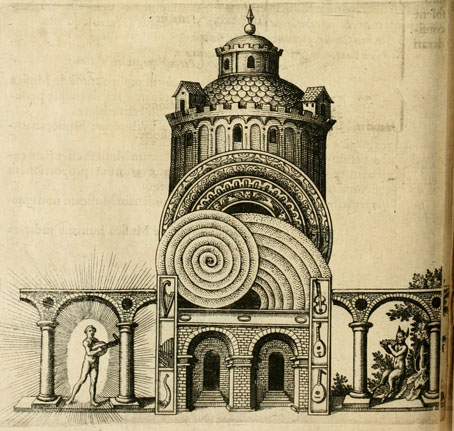
A second, smaller temple features a naked lute player and a Pan figure. Part of this illustration appeared inside the CD booklet for Pink Floyd’s The Piper at the Gates of Dawn in 1994, a fitting choice given the presence of Pan who happens to be the piper in question even though he’s not visible in the booklet detail. A later illustration by Matthäus Merian from the Musaeum Hermeticum can be seen in the lysergic murk on the cover of Pink Floyd’s A Saucerful of Secrets (1968).
Another set of these illustrations, and links to larger copies, may be found at BibliOdyssey.
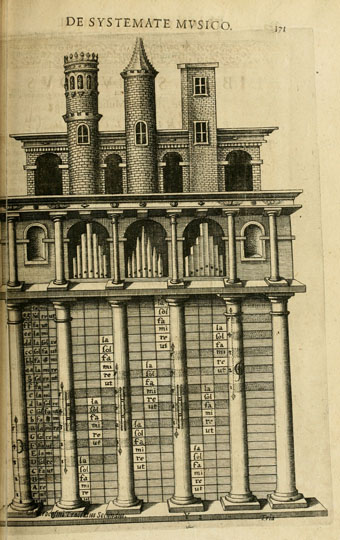
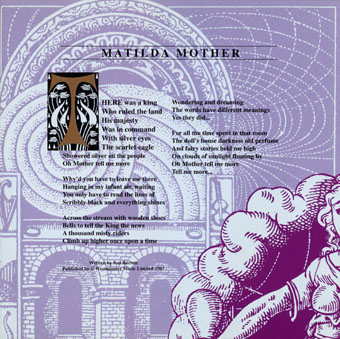
The Piper at the Gates of Dawn CD booklet. Design by Storm Thorgerson and Jon Crossland.
Elsewhere on { feuilleton }
• The etching and engraving archive

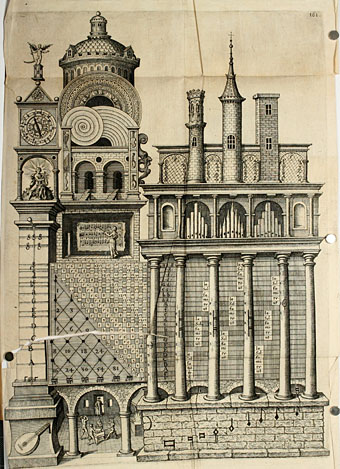
A second, smaller temple features a naked lute player and a Pan figure.
Reminiscent of the cover art for Ashra Tempel / Timothy Leary:
http://www.free-covers.org/covers/66113.jpg
Art by fellow-Krautrocker Walter Wegmüller, whose interests were sufficiently esoteric to include Robert Fludd.
Speaking of Bibliodyssey, I am belatedly reminded that Peacay had some Seattle Space Needle material up a while ago:
http://bibliodyssey.blogspot.co.nz/2007/03/century-21-exposition.html
The naked lute figure would be Apollo, with the sun behind him, so the figure seated opposite with the pipes would be Marsyas, who was flayed by Apollo in a contest over which was superior, the string or the wind instrument. The illustrations of instruments on either side of the doors include four stringed and two wind instruments. These are repeated at the top of the larger illustration, where Apollo, sun god, also sits, sun behind him, playing his lyre.
So I would guess that the naked figures with the furnace depict the forge of Vulcan, to symbolise the percussive instruments, the rhythm of the forge.
Sorry, I was wrong, (I have now found my book on Fludd)
It was not the forge of Vulcan, – it illustrates a scene of Pythagoras entering a forge, and he notices the consonant pitches produced by the four hammers. Examining the hammers, he found their weights in the proportions 12, 9, 8 and 6, giving the intervals of forth, fifth and octave.
I don’t know about music so I don’t know what that means….
herr doktor bimler: Yes, I have that ART album. And it’s never a surprise to find that Mr Peacay has already covered a subject in depth.
Paul: The text at the opening of this section mentions Apollo, and also mentions “satyrs, led by Sylvanus”, so it seems to be a general satyr rather than Pan himself. Pythagorus is also mentioned but then he would be when Fludd is writing about his harmonic scale. I ought to have considered him as the robed figure in the furnace room since he’s holding a mathematical instrument.
Yes, that is Pythagoras… and the blacksmiths are presumably naked because working in a forge is hot work! Wouldn’t fancy it myself with all those heavy mallets and jets of flame about… :)
I’m also a big fan of this engraving and recently joined the tradition of stealing from it for the second poster on this page:
http://larkfall.wordpress.com/2014/04/11/imaginal-acoustics-on-subtle-listening-sound-shapes-and-time/
P
Hi Phil. I’m considering working up a high-res version of the big Temple of Music so I can get a printed copy made.
Incidentally, a different version of the Acteon scene that’s on your site was posted here last year:
http://www.johncoulthart.com/feuilleton/2013/06/05/transformations/
Makes me wonder now which version came first.
It’d be great to see a new version of Temple of Music printed – I’d definitely buy one… maybe two!
Thanks for the link to the Acteon image – I was trying to remember where I’d seen it! I was originally looking for a nice medieval image (perhaps one MS I used to use in teaching, showing a time-lapse of a guy setting up camp on a sea-monster…), but the Acteon one sprang to mind as a good subtitute… although being unable to find my original source I had no idea it was actually different from the one you posted! :)
Fludd is on my mind now. I think I’ll dust off an old post about his diagram of the mind a bit later today. BTW, have you seen Peter Hauge’s work on Fludd’s Temple of Music? http://www.ashgate.com/isbn/9780754655107 – he also wrote a good paper which is a vindication of previous criticisms of Fludd’s musical knowledge: http://www.jstor.org/discover/10.2307/25487537?uid=3738032&uid=2&uid=4&sid=21104047721263
Best,
P
Definitely not come across the Peter Hauge before. It’s only very recently I’ve paid much attention to the writings of people such as Fludd and Kircher, in the past I’ve been more interested in the illustrations from their books, inevitably when they’ve been used so often for completely frivolous reasons. Looking through the Utriusque Cosmi it’s immediately evident what an astonishing work it is; anyone with that breadth of knowledge is going to make some interesting connections.